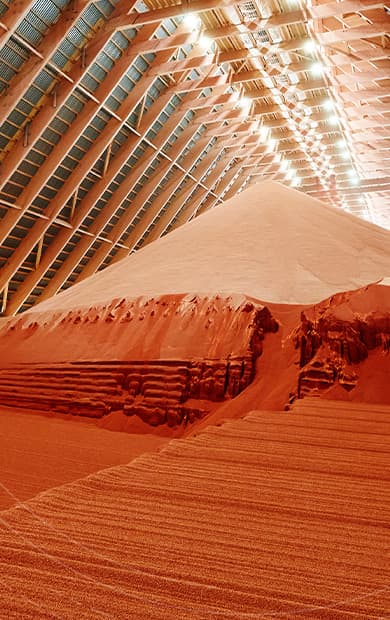Overview
The global phosphates market has witnessed increasing volatility, in response to military conflicts, political tensions and changing market dynamics. Price fluctuations have continued to buffet the market, with increasing demand from south and Southeast Asia the main regions driving consumption growth. Rising raw material prices and improved affordability have lifted prices once again.
Phosphates' usage is also not solely limited to fertilizers. Battery-material suppliers are increasingly seeking to source phosphate rock and specialty phosphates-based products to meet the rapidly rising demand for lithium-iron-phosphate batteries for electric vehicle production.
Our extensive phosphates coverage includes DAP, MAP, TSP and SSP, as well as raw materials phosphate rock and phosphoric acid, with assessments also spanning feed products MCP and DCP. Argus has many decades of experience covering the phosphates market and incorporate our multi-commodity market expertise in key areas including sulphur and ammonia to provide the full market narrative.
Argus support market participants with:
- Daily and weekly phosphates price assessments, proprietary data and market commentary
- Short and medium to long-term forecasting, modelling and analysis of processed phosphate and phosphate rock prices, supply, demand, trade and projects
- Bespoke consulting project support
Latest phosphate news
Browse the latest market moving news on the global phosphate industry.
No Results Found

Argus Fertilizer Market Highlights
The complimentary Argus Fertilizer Market Highlights package includes:
• Bi-weekly Fertilizer Newsletter
• Monthly Market Update Video
• Bi-monthly Fertilizer Focus Magazine
Spotlight content
Browse the latest thought leadership produced by our global team of experts.
Fertilizer Matters EP31: EU duties on Russian fertilizer imports, May 2025
Insight papers - 21/05/25China’s PPA Market: Growing non-fertilizer demand, forecast & new price assessments
Fertilizer Matters Ep30: US Fertilizer Markets are Tariff-ied
Explore our phosphate products
Region and country focused market intelligence
Key price assessments
Argus prices are recognised by the market as trusted and reliable indicators of the real market value. Explore some of our most widely used and relevant price assessments.



